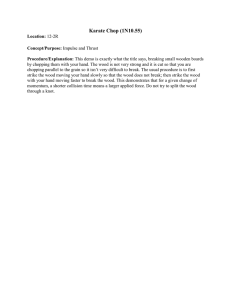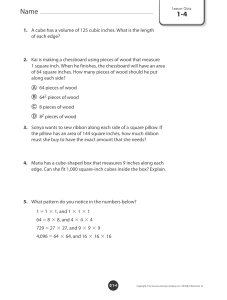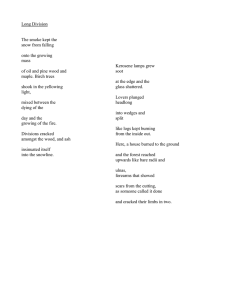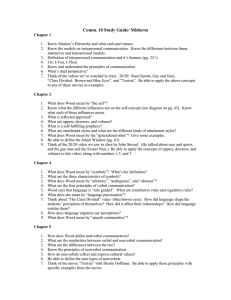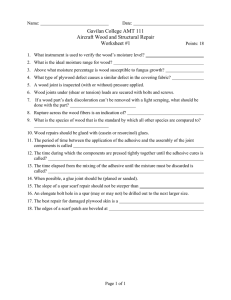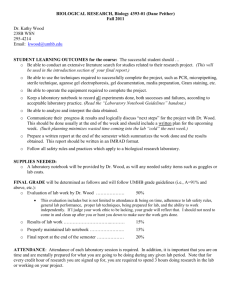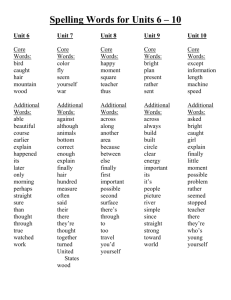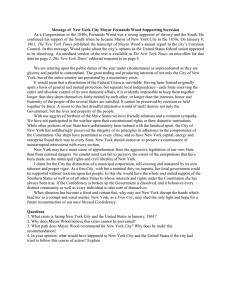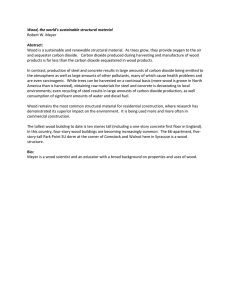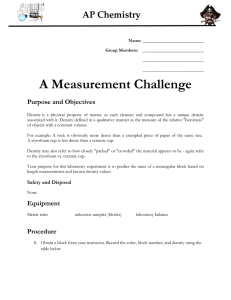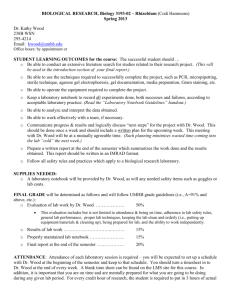In 1634, William Wood describes the division of labor between
advertisement
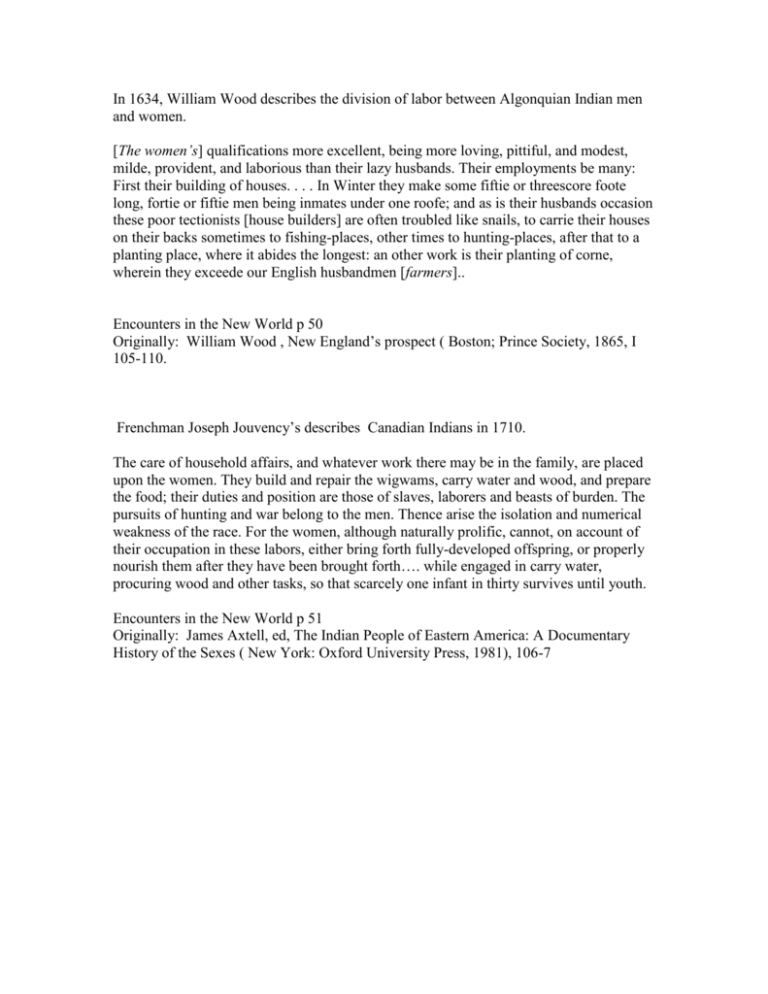
In 1634, William Wood describes the division of labor between Algonquian Indian men and women. [The women’s] qualifications more excellent, being more loving, pittiful, and modest, milde, provident, and laborious than their lazy husbands. Their employments be many: First their building of houses. . . . In Winter they make some fiftie or threescore foote long, fortie or fiftie men being inmates under one roofe; and as is their husbands occasion these poor tectionists [house builders] are often troubled like snails, to carrie their houses on their backs sometimes to fishing-places, other times to hunting-places, after that to a planting place, where it abides the longest: an other work is their planting of corne, wherein they exceede our English husbandmen [farmers].. Encounters in the New World p 50 Originally: William Wood , New England’s prospect ( Boston; Prince Society, 1865, I 105-110. Frenchman Joseph Jouvency’s describes Canadian Indians in 1710. The care of household affairs, and whatever work there may be in the family, are placed upon the women. They build and repair the wigwams, carry water and wood, and prepare the food; their duties and position are those of slaves, laborers and beasts of burden. The pursuits of hunting and war belong to the men. Thence arise the isolation and numerical weakness of the race. For the women, although naturally prolific, cannot, on account of their occupation in these labors, either bring forth fully-developed offspring, or properly nourish them after they have been brought forth…. while engaged in carry water, procuring wood and other tasks, so that scarcely one infant in thirty survives until youth. Encounters in the New World p 51 Originally: James Axtell, ed, The Indian People of Eastern America: A Documentary History of the Sexes ( New York: Oxford University Press, 1981), 106-7
